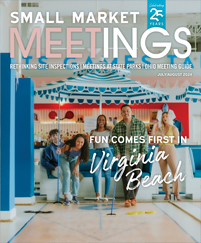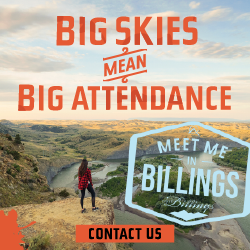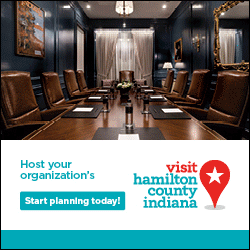What’s more motivating than the prospect of a day relaxing by turquoise Caribbean waters or exploring a historic European castle? Very little, which is why companies invest in incentive travel programs, designed to reward their top-performing employees and encourage competition.
Incentive programs often feature breathtaking destinations, luxurious lodging and plenty of fun activities. Incentive travel may seem like more play than work, but designing the perfect trip to reward a company’s hardest-working players involves a lot of careful planning.
These tips from industry experts will get any incentive program off to a good start.
Dream Destinations
At first glance, choosing the perfect location for an incentive event may seem as simple as locating the nearest beach resort, but there are a lot more factors for planners to account for when designing the perfect program. A glamorous destination is a must, because the program needs to be based in a desirable location to inspire competition and hard work. But not just any desirable vacation spot will do.
“At the end of the day what our customers are looking for are locations that the winners wouldn’t necessarily take their families on vacation,” said Michelle Crosby, account executive at Brightspot Incentives and Events, an event-services agency based in Irving, Texas.
For example, if a company is located in Texas and its workers tend to vacation in popular domestic destinations like Florida, a more exciting location such as the Caribbean or Europe may be a good alternative. The point is to hit items on their bucket list — rather than run-of-the-mill vacation sites — to truly inspire motivation among company employees.
Other factors, such as the potential attendee demographics, will inform the choice of locale, according to Crosby. The age, gender, travel history and activity level of a company’s employees are all factors that planners must consider when selecting a destination. A more active group of employees is more likely to enjoy a destination with a lot of potential for outdoor activities than a group of senior-level executives looking to relax.
Another important factor is the history of the incentive program; for many companies, the top performers and winners of incentive trips end up winning the trips multiple years in a row.
“A lot of companies don’t like to repeat destinations,” said Ashley Glade, independent hospitality contractor and the founder and principal of Events Done Right, Inc.
Glade also points to logistical factors such as safety as important considerations. It’s unwise to plan incentive events on the Gulf of Mexico during hurricane season, for instance. Factors such as group size are also important, because very large groups or very small groups exclude certain destinations by default.
While meetings often take place domestically, the point of incentives is to think big, meaning international destinations are frequently on the table.
“You’d go to Florida for a meeting, but you’d much rather go to Paris for an incentive trip,” said Crosby.
Amy Beilke, director of business development at Carrousel Travel, a Minneapolis-based travel company, pointed out international travel comes with other considerations; factors like obtaining visas or other documents, dealing with air travel, variable exchange rates and fees, and even immunizations are all important to look into when planning an international incentive program.
Budgeting for Bonuses
Another area where planning an incentive differs from planning a meeting, conference or similar event is the budget. That’s because incentive planners need to plan for a lot of extra expenses to make the trip special.
The first major budgetary consideration is budgeting for two. After all, one of the biggest purposes of an incentive is “to not only recognize and reward the award-winner who’s going on the trip but also those who support the award winner,” said Crosby. In other words, well-designed incentive programs usually accommodate a winner and their plus-one, which means the budget needs to reflect that. All activities, meals and accommodations should be designed to include two people.
When it comes to incentive travel, the key to ensuring a rewarding experience for the winners is detail: Are they served welcome drinks? Is their luggage taken up to their room automatically? Do they have room credits for a spa visit? Are meals and transportation free? These details are what determines the level of luxury of an incentive program, and often these details don’t come cheap.
“Your incentive budget is all about how the winner and their guest don’t have to open their wallets,” said Crosby.
Another extra to budget for is gifts for winners and their guests. Gifts, which can be simple or more elaborate, depending on the company’s requests, are one more thing that leave winners feeling rewarded and appreciated for their hard work. Whether it’s a pair of sunglasses or a sweater, paying for a little extra something adds a level of detail and luxury to any incentive program.
One more factor to consider is paying for travel costs; while this may not be automatically included for attendees of a conference, travel to the destination should be included in the incentive program. Since many destinations for incentive travel are international, that means airfare, which can be pricey. There’s also transportation from the airport, as well as to and from activities. Planners should include all these expenses in their budgets so that incentive winners don’t have to pay for them.
The budget for an incentive trip is usually going to be larger than that for another kind of trip, but the point of having an incentive program is to motivate employees to work harder, meaning it all evens out in the end.
“The whole purpose of an incentive is that it’s a self-funded marketing initiative,” said Bielke.
Crafting an Experience
Just like it’s fitting to choose a destination that guests wouldn’t normally go for vacation, it’s important to choose activities they might not necessarily be able to do on their own, especially activities that may otherwise not be affordable or accessible to the average traveler. Activities like parasailing or scuba diving are great, as are other excursions or activities unique to the area.
“We’re always looking for things off the beaten path, things they can’t do on their own,” said Bielke.
When it comes to designing the agenda, the big difference between planning meetings and conferences and planning an incentive program is what the participants get out of them.
“Meetings have an objective, but incentives are about an experience,” said Glade.
Creating a rewarding experience is all about making good memories. Fun and unique activities, delicious meals and beautiful settings are what create these memories, so giving participants the time and ability to enjoy them is critical.
Some organization leaders might want to combine the incentive trip with a sales meeting or other business session. However, there’s a balance. Too much structure or too many activities may take away the relaxation aspect of an incentive trip. Too few activities may make the trip seem boring or poorly designed, so a good compromise is to offer the winners and their plus-ones choices on how to spend their time.
Whether they want to relax on the beach all day or participate in local adventures, they should participate at their leisure, “almost like there’s no agenda,” said Crosby.
When it comes to creating an ideal mix of work and fun, it depends on the company hosting the incentive. While some companies want to incorporate a meeting or ceremony into the agenda, or even a half-day of meetings before the fun begins, programs that include too much work may not be as rewarding for winners.
“Some kind of business can be accomplished, but the big difference is that incentives are more fun-focused,” said Glade.
There are other ways to build in work without it overwhelming the purpose of the trip. Some incentive programs accomplish this by building in time to recognize the winners’ achievements with a group breakfast with the executive team or a presentation honoring them. Group dinners or excursions are also a great way to include networking that’s productive without taking away from the rewarding aspects of the trip.











